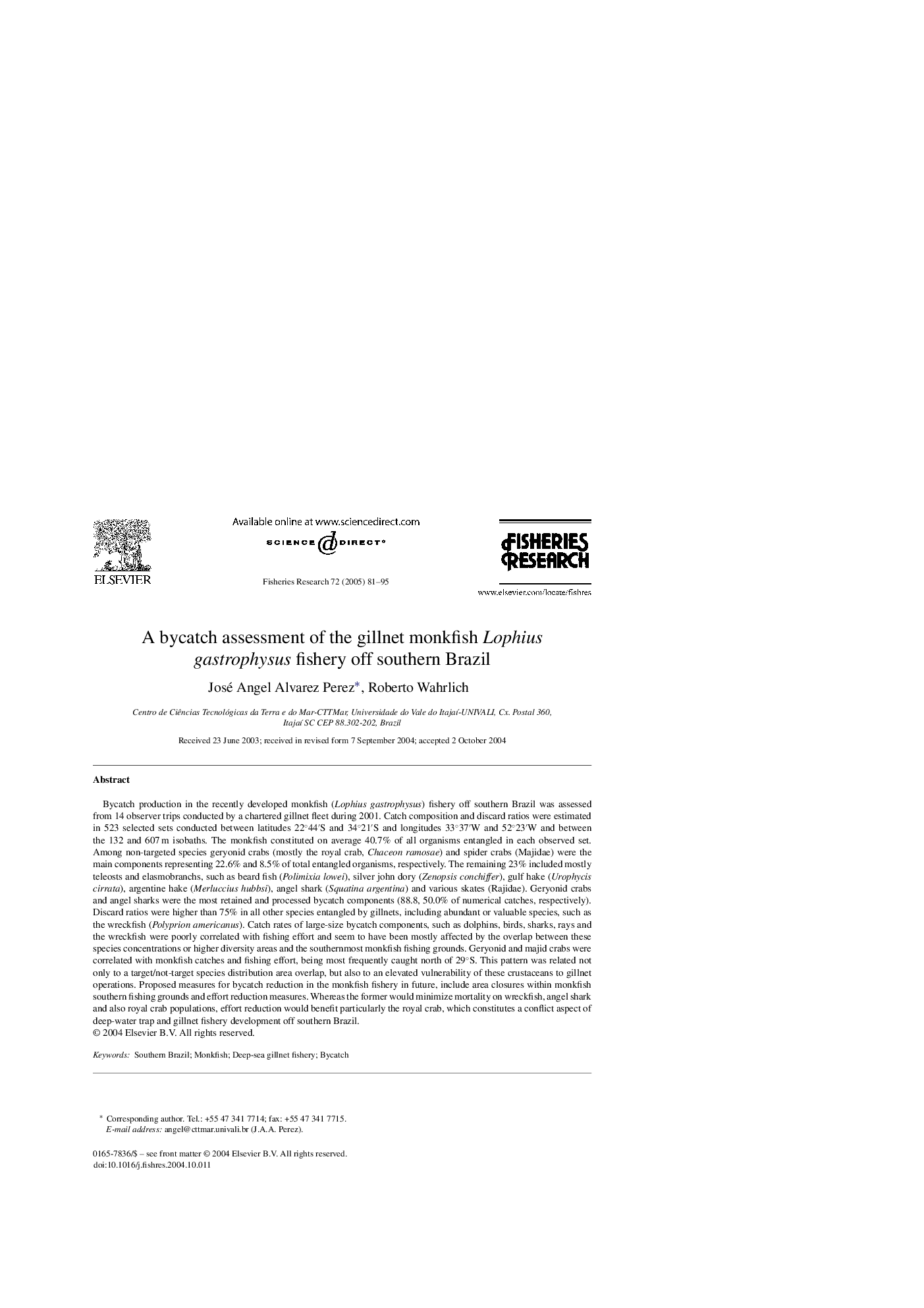| Article ID | Journal | Published Year | Pages | File Type |
|---|---|---|---|---|
| 9481799 | Fisheries Research | 2005 | 15 Pages |
Abstract
Bycatch production in the recently developed monkfish (Lophius gastrophysus) fishery off southern Brazil was assessed from 14 observer trips conducted by a chartered gillnet fleet during 2001. Catch composition and discard ratios were estimated in 523 selected sets conducted between latitudes 22°44â²S and 34°21â²S and longitudes 33°37â²W and 52°23â²W and between the 132 and 607 m isobaths. The monkfish constituted on average 40.7% of all organisms entangled in each observed set. Among non-targeted species geryonid crabs (mostly the royal crab, Chaceon ramosae) and spider crabs (Majidae) were the main components representing 22.6% and 8.5% of total entangled organisms, respectively. The remaining 23% included mostly teleosts and elasmobranchs, such as beard fish (Polimixia lowei), silver john dory (Zenopsis conchiffer), gulf hake (Urophycis cirrata), argentine hake (Merluccius hubbsi), angel shark (Squatina argentina) and various skates (Rajidae). Geryonid crabs and angel sharks were the most retained and processed bycatch components (88.8, 50.0% of numerical catches, respectively). Discard ratios were higher than 75% in all other species entangled by gillnets, including abundant or valuable species, such as the wreckfish (Polyprion americanus). Catch rates of large-size bycatch components, such as dolphins, birds, sharks, rays and the wreckfish were poorly correlated with fishing effort and seem to have been mostly affected by the overlap between these species concentrations or higher diversity areas and the southernmost monkfish fishing grounds. Geryonid and majid crabs were correlated with monkfish catches and fishing effort, being most frequently caught north of 29°S. This pattern was related not only to a target/not-target species distribution area overlap, but also to an elevated vulnerability of these crustaceans to gillnet operations. Proposed measures for bycatch reduction in the monkfish fishery in future, include area closures within monkfish southern fishing grounds and effort reduction measures. Whereas the former would minimize mortality on wreckfish, angel shark and also royal crab populations, effort reduction would benefit particularly the royal crab, which constitutes a conflict aspect of deep-water trap and gillnet fishery development off southern Brazil.
Keywords
Related Topics
Life Sciences
Agricultural and Biological Sciences
Aquatic Science
Authors
José Angel Alvarez Perez, Roberto Wahrlich,
